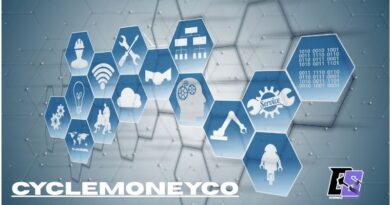How to Determine If Your Roof Requires Repairs or a Full Replacement
The roof is vital to a home’s exterior, protecting it from harsh weather conditions. However, it’s not immune to wear and tear, leading to deterioration over time. Recognizing the need for repairs or replacement is crucial for peace of mind, property value, and family safety. Reaching out to a reputable Arvada Roofing Companyearly in the assessment process can help make informed decisions. With timely knowledge and a systematic approach to roof care, homeowners can extend their roof’s lifespan and avoid emergency repairs. This comprehensive guide helps homeowners assess their roof’s health and plan necessary actions, ensuring the home’s integrity, efficiency, and curb appeal.
Inspect for Visible Damage
A thorough visual inspection of your roof is crucial for determining its condition. Look for missing or damaged shingles, granule loss, and moss or algae growth. Damaged shingles reduce water shedding and resistance to bad weather, making your home vulnerable to leaks. Excessive granule loss indicates a loss of protection against UV rays and harsh weather. Moss or algae growth traps moisture against shingles, accelerating rot and decomposition of roofing materials. Unchecked growth can damage underlying structures and lead to leaks and further decay. Visual inspections should be performed at least twice yearly, preferably in the spring and fall, and after significant storms. Early detection saves time and money, preventing small issues from causing major roof failures.
Check for Interior Signs of Damage
A compromised roof can often be detected in the interior of a home before visible surface damage. A thorough inspection of ceilings, attic, and upper walls can reveal water stains, mold or mildew, and daylight in the attic. These signs indicate moisture seeping in, causing mold growth and posing health risks. Addressing these warning signs promptly is crucial, as even small leaks can damage wooden framing and insulation and lead to substantial repair costs. Acting quickly can prevent interior damage and costs from increasing.
Consider the Age of Your Roof
The lifespan of your roof depends on its materials, installation quality, and maintenance history. Asphalt Shingle Roofs typically last 20-30 years, while Metal Roofs can last 40-70 years. Clay or concrete tiles can last over 50 years with regular care but can break under impact. If your roof is approaching or exceeding its expected service life, be proactive by scheduling inspections and planning for replacement to avoid hasty decisions and allow time to research options thoroughly.
Evaluate Energy Efficiency
An unexpectedly high utility bill isn’t always attributable to changing rates. An aging or damaged roof can seriously undermine your home’s energy performance by allowing unwanted heat in during summer or letting precious warmth escape in winter. Inadequate ventilation, condensation, and old or failed insulation only add to inefficiencies, causing HVAC units to work overtime.
If you notice fluctuating temperatures from room to room or a persistent draft, your roof may be the hidden culprit. Upgrading attic insulation, improving ventilation, sealing leaks, and replacing damaged shingles or decking can all restore—and even enhance—your home’s energy efficiency. In addition to reducing your utility bills, these efforts increase overall comfort and may help your roof reach its full life expectancy.
Seek Professional Assessment
While self-inspections are useful for identifying obvious concerns, they do not substitute for the expertise and comprehensive analysis a seasoned roofing contractor provides. A credible professional will assess not only obvious surface damage, but also subtle or hidden vulnerabilities that might escape a homeowner’s notice. They can:
- Uncover potential early-stage problems—saving you from future wooden structure decay, mold infestation, or escalating leak damage.
- Provide an honest, unbiased evaluation of whether targeted repairs or a full replacement will be most practical and cost-effective for your situation.
- Develop ongoing maintenance schedules and furnish precise cost estimates, which will help you safeguard your property for the years ahead.
Collaborating with a roofing company offers you specialized local knowledge and the reassurance of a long-standing reputation for reliability. This is especially valuable when dealing with an investment as important as your home’s roof, where expertise truly matters.
Conclusion
Your roof is far more than a structural feature—it’s your home’s shield, essential to the safety, comfort, and long-term value of where you live. By staying alert to the signs of deterioration and taking preventative action, you can avoid major problems and gain priceless peace of mind. Remember, the best way to extend your roof’s life and ensure your home remains a haven is through regular inspections, prompt maintenance, and a strong partnership with trusted professionals.
read also this: modernbusinesslife .com




